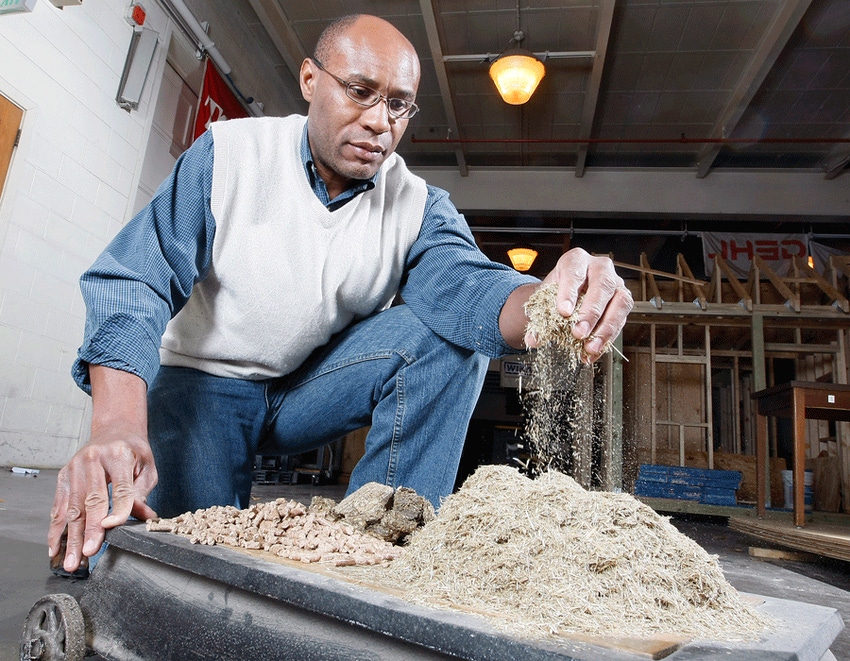
• The pellet-making process causes a nearly 50 percent loss of biomass yield. If two bales of cellulosic biomass are used to create pellets, the pellets only weigh as much as one of the original bales, Ileleji said. This is because as much as 50 percent of the original feedstock could be lost in the pelleting process.• In the end, the cost of converting corn stover and switchgrass into pellets outweighed the transportation and storage savings.
November 18, 2010

Despite reducing transportation and handling costs, pelletizing cellulosic biomass would not be cost-effective for ethanol producers, according to a Purdue University study.
Klein Ileleji, an associate professor of agricultural and biological engineering, and Preethi Krishnakumar, a graduate research student, factored the costs and logistical requirements cellulosic ethanol producers would face using different types of biomass — corn grain, corn stover and switchgrass — in both bale and pellet forms.
Their findings, published in the current issue of the journal Applied Engineering in Agriculture, show that the denser cellulosic pellets would allow ethanol producers to save money by utilizing the same equipment used to transport and handle corn grain that flows using elevators, hoppers and conveyor belts.
"If a producer is switching from a corn ethanol plant to a cellulosic plant, they are starting with an existing grain system, and the storage and handling costs for pellets will be less since they are granular and flowable like corn grain," Ileleji said. "If you use bales, you will have to invest in capital costs for storage buildings and forklifts, and your infrastructure will have to change dramatically."
But the pellet-making process causes a nearly 50 percent loss of biomass yield. If two bales of cellulosic biomass are used to create pellets, the pellets only weigh as much as one of the original bales, Ileleji said. This is because as much as 50 percent of the original feedstock could be lost in the pelleting process.
Bales were cheaper to transport at small ethanol-production facilities, while pellets were more cost-effective at larger facilities that produce 100 million gallons per year or more. That's because as a facility's size increases, it has to bring in feedstock from a larger radius and low-density bales cost more to transport. The pellet transportation cost for large plants could be further reduced if pelleting plants were located close to growing fields.
Storage costs
For storage, costs per ton for bales were significantly higher than for corn grain and pellets for all plant sizes investigated. For plant sizes above 60 million gallons per year, the storage costs for bales was almost three times that of pellets. About 85 percent of the storage cost for bales was attributed to the capital, operating and maintenance costs of new bale-handling equipment.
In the end, the cost of converting corn stover and switchgrass into pellets outweighed the transportation and storage savings.
"There needs to be research focused on increasing the efficiencies and reducing the losses in densifying bales into pellets or briquettes since the potential economic gain in transportation and storage will make a huge impact in reducing the logistics cost," Ileleji said.
Ileleji said the findings are important because they give ethanol producers a baseline for the costs and logistical requirements of supplying different forms and types of cellulosic biomass feedstocks.
"Without solving the logistical issues, commercial production of second-generation biofuels will not take place," Ileleji said.
The study was restricted to finding costs before conversion to ethanol. Ileleji will do further research on the cost and benefits of processing densified cellulose feedstocks such as pellets into ethanol compared with using baled feedstock in order to determine whether the densification would reduce downstream processing costs.
The information for the study was gathered from ethanol plant builders, ethanol producers and published data. Duke Energy and the Purdue Energy Center funded the research.
You May Also Like



